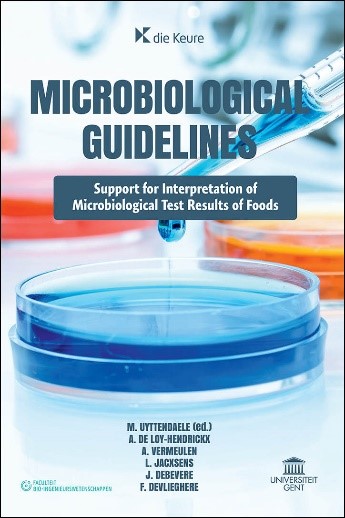식품 미생물 학자의 삶에서의 'Big Five'
2018년 5월 17일, 겐트대 본교 방문교수 Mieke Uyttendaele 는 식품 미생물에 대한 흥미로운 강연을 진행했다. 이 세미나는 살모넬라균, Campylobacter jejuni/coli, 인간 병원성 대장균, Listeria monocytogenes 을 포함한 4개의 박테리아 및 1개의 식량 매개 바이러스, 즉 노로 바이러스를 포함하는 식품 미생물 5개 거대 병원균의 연구 전략을 논의했다. 연구는 신뢰할 수 있는 결과를 제공하기 위한 적절한 샘플링 및 테스트 방법 선택, 식품 준비 과정의 임계 시간, 온도 조합 또는 오염 제거 전략을 식별하기 위한 예측 모델링 및 유발 검사와 같은 적절한 도구의 개발, 식량 공급을 보호하기 위한 보관 및 식품 가공에 중점을 두었다. 주요 도전 과제로는 이것을 식품안전 및 위험평가에 어떻게 연결할 것인가이다.
음식은 맛있고 건강하며 지속 가능해야 하고 너무 비싸지 않아야 한다. 그리고 음식은 또한 안전해야 하며 유통기한이 다할 때까지 양질의 상태를 유지하는 것이 보장되어야 한다. 수년 동안, 살모넬라균를 포함한 다양한 병원균이 식품안전연구의 중심이었다. 지난 10년 동안 유럽에서 살모넬라증이 감소 추세를 보였지만 여전히 주요 식품 매개 병원체이다. 살모넬라균은 다양한 혈청군과 유전자형을 가지고 있는 변통성이 있는 생물로, 각각 다른 병원소와 불리한 조건에 적응하고 생존할 수 있는 잠재력을 가지고 있다. 겐트대학교의 식품 기술, 안전 및 보건 부서에서 진행한 식품 안전 연구는 근거 기반의 의사 결정을 지원하기 위해 진행되었다. 하나의 가시적인 성과는 식품 미생물학 및 식품 보존 연구 그룹이 집필한 미생물학 지침(Uyttendaele Mieke 편집)에 관한 책이다. 식품의 미생물 분석은 식품 안전을 보장하는 핵심 요소이다. 측정은 지식을 야기하고 미생물 지침은 식품 또는 식품 생산 과정의 수용 가능성을 판단하는 데 도움을 준다. 미생물학 지침에 관한 책은 식품의 예상 미생물 오염에 대한 신속한 답변을 제공하기 위해 참조 될 수 있다. 이것은 식품 생산에서 위생적인 관행을 평가하고, 유통 기한을 결정하고, 식품 안전을 보장하는 테스트 결과의 해석을 도울 수 있다.
Mieke Uyttendaele 교수는 벨기에 겐트대학교에서 생물과학 공학학위(1992)와 응용생물과학 박사학위(1996)를 취득했다. 그는 벨기에 국립과학연구기금을 통해 박사 후 연구를 수행했으며, 2004 년부터 겐트대학교의 생명과학 공학부, 식품공학 안전보건부의 교수로 재직 중이다. Mieke Uyttendaele 교수의 연구 분야는 식품의 미생물 분석 (고전 배양 방법 및 신속한 방법)과 식품 안전이다.

Mieke Uyttendaele 교수 저서: microbiological guidelines
원문: The big five in the life of a food microbiologist - Mieke Uyttendaele
Food should be tasty, healthy, sustainable and preferably not too expensive. But food should also be safe and with sufficient guarantees on maintaining good quality aspects until the end-of-shelf life. Throughout the years, various pathogens have been the focus of our food safety research. Some are established pathogens. Salmonella is a good example of this. There was a decreasing trend for salmonellosis in Europe of the last 10 years, however, the number of reported cases at present stabilizes and Salmonella remains a major food borne pathogen of concern. Salmonella is a versatile organism, with many serogroups and genotypes, each with a different reservoir and potential to survive and adapt to adverse conditions. Thus our interventions to mitigate Salmonella contamination need to shift along, addressing other type of foods or rethinking our control strategies as this pathogen evolves. Also the introduction of molecular techniques in food diagnostics, increase in global trade, climate change or the shift to a more sustainable diet with less animal products but more fruits and vegetables may impact on the pathogens that (re)emerge and get on the food safety radar. The seminar discussed the research strategies of the big five pathogens in the life of a food microbiologist encompassing four bacteria i.e. Salmonella sp., Campylobacter jejuni/coli, human pathogenic E. coli, Listeria monocytogenes and one food borne virus i.e. human Norovirus. Research efforts were focused the selection of appropriate sampling and testing methodologies to provide reliable results, and development of appropriate tools such as predictive modeling and challenge testing to identify critical time/temperature combinations or decontamination strategies during processing, storage and food preparation to safeguard the food supply. Main challenge is still addressing consumer behaviour and how to deal with this into food safety risk assessment.
Research in food safety as conducted at the Dept of Food Technology, Safety & Health at Ghent University is elaborated to support evidence-based decision making. One tangible outcome is the book on Microbiological Guidelines elaborated by the research group of Food Microbiology and Food Preservation (Ed. Uyttendaele Mieke). Microbiological analysis of foods is a key factor in ensuring food safety. Measurement brings knowledge and microbiological guidelines help in judging the acceptability of food or food production processes. The new edition of this handbook provides microbiological guidelines and current applicable EU legal criteria (status 1.1.2018) for a wide range of food categories (dairy, meat, seafoods, plant-based foods, bakery products, composite foods, shelf-stable food, water) and subcategories therein, based upon the type of food processing and intrinsic characteristics of the foods. The book on Microbiological guidelines can be consulted to provide quick answers on the expected microbiological contamination of foodstuff. It can help in interpretation of test results in assessing good (hygienic) practices in the production of food, determining the shelf life and ensuring food safety.
UYTTENDAELE Mieke
Professor, expertise in microbiological analysis of foods, food safety, risk assessment, Ghent University, Faculty of Bio-Science Engineering, Department of Food Technology, Safety and Health. Coupure Links 653, 9000 Ghent, Belgium

